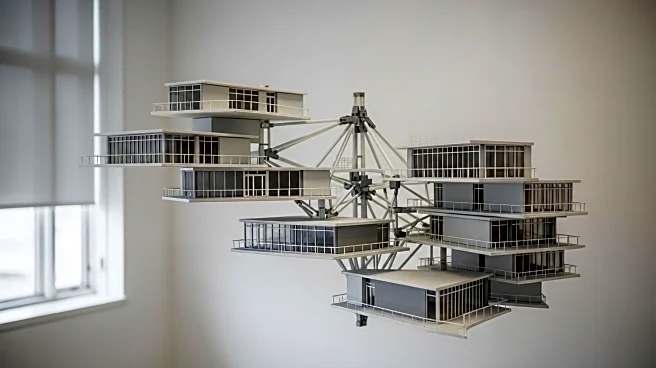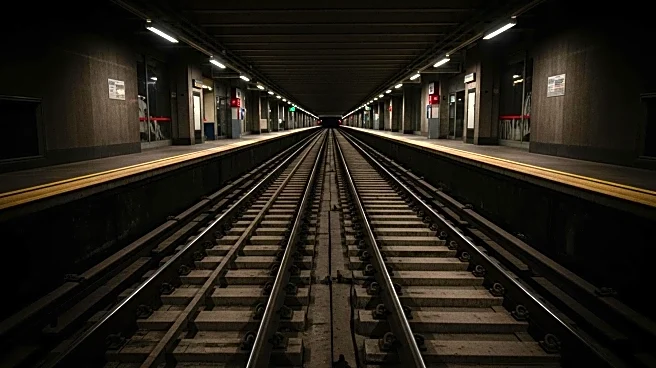What's Happening?
A viral video showcasing what appear to be 'free floating' apartment units in Vienna has sparked interest and prompted experts to explain the engineering principles behind the illusion. The video, shared by TikTok user @edgyonedge, features modern apartments that seem to hover without visible support, amassing over 615,000 views. Experts clarify that these structures utilize cantilevers, a well-established architectural technique where parts of a building extend outward from a solid base. Architect Miles Smith from Graphisoft explains that cantilevers are supported by a 'back span,' which balances the overhanging weight. This method allows for dramatic design elements that appear to defy gravity while remaining structurally sound. Peter Bafitis of RKTB Architects notes that cantilevers are not only used for their visual impact but also to maximize space, as seen in a recent project in Brooklyn.
Why It's Important?
The use of cantilevers in architecture highlights the blend of aesthetic innovation and engineering precision. This technique allows architects to create visually striking buildings that maximize space without compromising safety. The viral interest in these 'floating' apartments underscores a growing public fascination with architectural design and engineering feats. For the construction industry, such designs can lead to increased demand for innovative building techniques and materials. Additionally, these structures can enhance urban landscapes by providing more public space at street level and increasing rentable areas above. The trend also reflects a broader movement towards sustainable and efficient use of urban space, which is crucial as cities continue to grow and evolve.
What's Next?
As interest in innovative architectural designs grows, more projects may incorporate cantilever techniques to achieve both aesthetic and practical goals. This could lead to further advancements in architectural software and engineering methods, allowing for even more ambitious designs. Urban planners and developers might increasingly adopt these techniques to address space constraints in densely populated areas. Additionally, the construction industry may see a rise in demand for skilled engineers and architects capable of executing such complex designs. Public interest in architectural innovation could also drive educational initiatives and inspire future generations of architects.
Beyond the Headlines
The fascination with 'free floating' apartments also touches on cultural and artistic dimensions of architecture. These designs challenge traditional perceptions of building structures, encouraging a dialogue between art and engineering. The use of cantilevers as a design statement reflects a broader trend in architecture where form and function are seamlessly integrated. This approach not only enhances the visual appeal of urban environments but also promotes a more sustainable and efficient use of space. As cities continue to expand, such innovative designs could play a crucial role in shaping the future of urban living.












